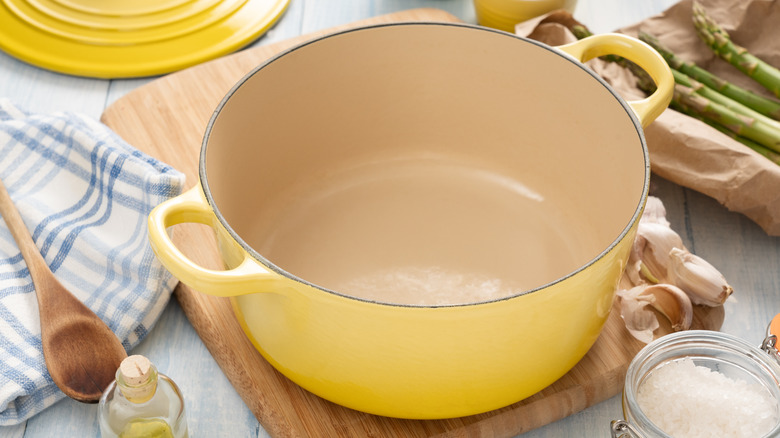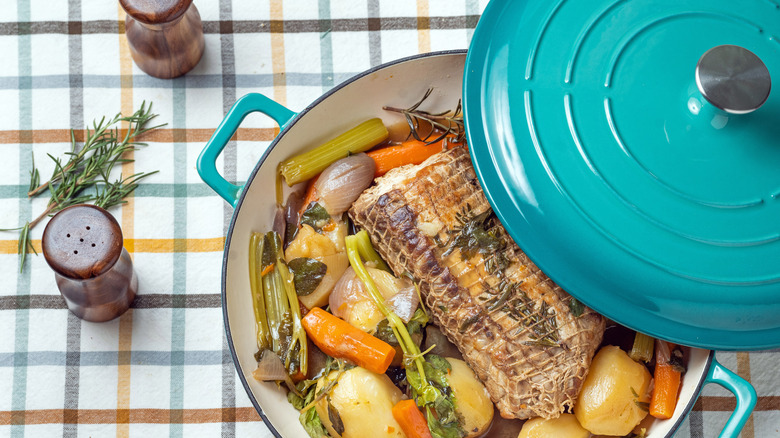When Cooking In A Dutch Oven, Never Skip This First Step
Nearly any kitchen task can be accomplished with a large, heavy, cast iron pot coated in enamel and topped with a tight-fitting lid. Dutch ovens (not to be confused with "French ovens") are versatile, tough, and simple to care for. The enamel coating makes the Dutch oven easier to clean and lends an aesthetically pleasing glinted sheen. That coating allows home cooks to reap the benefits of cooking with cast iron without having to season it, facilitating minimal maintenance. You don't have to dry and re-oil the surface of the cookware after each use, as with traditional cast iron. Compared to other nonstick pots and pans, Dutch ovens also hold up better to extended cooks over higher heats, allowing for dimensional flavor development and differentiated textures in your dishes.
What that enamel coating does not do, however, is prevent food from sticking to the bottom of the pot, burning, and cementing there. Even if the inside of your Dutch oven appears shiny and nonstick, it likely is not. Placing a dry, non-oiled, enamel-coated Dutch oven over a heating element can permanently damage the pot and its coating. That's why, when cooking anything in a Dutch oven, be sure not to skimp on the cooking oil or butter. Give the inside of your pot a generous coating before adding any food ingredients to prevent scalding. Make sure a liquid or fat totally covers the bottom of the dutch oven before applying any heat.
Don't forget to lay on the oil when heating up a Dutch oven
A heavy hand on the pre-cook oiling can be especially important considering Dutch ovens are typically used to make dishes with extended cooking times. With enough oil, you don't have to worry about leaving a pot unattended for too long and risking it boiling dry. The large surface area conducts heat slowly and evenly, and holds onto that heat for a long time, while the tight-fitting lid traps heat and moisture. The result is optimal retention and uniform distribution for slow-roasting soups and stews, making knockout sauces, deep-frying, braising meats, cooking large roasts, and even baking loaves of bread. That's why it's crucial to slather your dutch oven in enough oil or butter to make sure it'll last until the end of the cooking time, protecting your pot and leaving you worry-free while dinner comes together.
On a similar note, get the most out of your Dutch oven, be sure to only use it with wood or silicone cooking utensils. Metal spatulas and spoons can scratch the enamel coating. Food tends to adhere more to scratched surfaces, and also if it gets damaged, that scratched enamel coating can flake off and end up in your food. Popular brands like Le Creuset, Staub, Lodge, Cuisinart cost a little extra, but with proper care (and enough oil pre-cook), your Dutch oven can last a lifetime.

